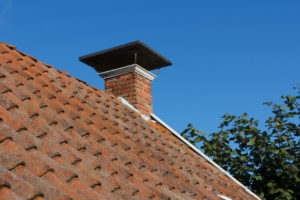When it comes to your chimney, you may be ready to call it quits when spring finally comes around. In actuality, spring may be pretty busy if your chimney isn’t properly maintained. If it isn’t properly waterproofed, you might find yourself spending time and money on masonry repairs in the spring. If it isn’t properly protected, you may find that nesting animals make it home during the spring. Animals, birds, or debris in your chimney anytime can be a major headache. You can avoid this occurrence by protecting the chimney flue with a cap. Not sure where to start? We can help!
Caps and Chase Covers
Some of the terms that chimney professionals may use can be confusing to homeowners who don’t deal with all types of chimney systems.
-Masonry chimneys have a masonry crown and a flue opening at the top of the chimney. While the crown acts as a ceiling or the chimney, the flue is left open, unless it’s covered with a cap. The cap is made of metal—galvanized steel, stainless steel, or copper. They attach to the top of the flue opening and act as a roof for the system. When your chimney is capped, the water and weather run off the cap and onto the crown. The cap also prevents debris from entering the system and features a metal mesh that keeps critters out. Remember, anything that can climb or fly onto the roof can make it into the chimney if allowed.
-Prefabricated chimneys or factory-built chimneys are not constructed of masonry, but rather whatever the home is made of. A prefab chimney may be covered in the siding of whatever style that matches the home. However, instead of a crown, the chimney is covered with a metal cover called a chase, and in place of a cap is the chase cover which covers the chase end-to-end.
Protection From the Top, Down
Your chimney needs protection from the top, down, and that starts with the cap or chase cover. Without it, you may have water damage that puts your home at risk and your family in danger. You might end up with an animal making your chimney its home or even becoming stuck, obstructing, or possibly suffocating in your system. If a chimney swift nests inside your chimney, you cannot legally remove it! These birds are federally protected and must be allowed to leave on their own. These birds nest in hollow trees and chimneys throughout North America and will nest in an uncapped chimney. Knowingly removing them, destroying their nests or their eggs, or lighting a fire while they are inside the chimney is a federal offense. The only way to prevent animal intrusion throughout the year and especially this spring is to cap the chimney properly. If your chimney isn’t protected this spring, we can help.
Chesapeake Chimney & Co caps chimneys throughout Southern Maryland. This type of care will help protect your chimney from water, weather, and animals year-round, and our top brands keep protecting year after year.
Call Chesapeake Chimney & Co today at 410-535-0052.

Recent Comments